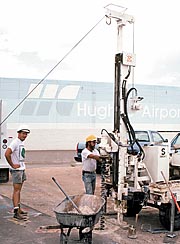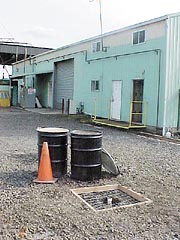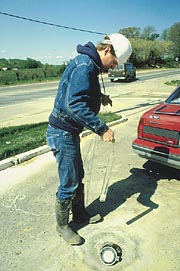
As a first step, a comprehensive review of applicable regulatory requirements should be conducted. In many cases, state regulatory agencies will have mandatory guidelines for the types and placement of compliance monitoring wells. Inclusion of additional sampling points at property boundaries or near politically sensitive areas may be warranted for community relations purposes.
For example, the regulatory framework and monitoring objectives were considered when recommending which wells to include in the ground water monitoring program at the Naval Weapons Industrial Reserve Plant in Dallas. The Texas Natural Resources Conservation Commission provided minimum requirements for the use of background wells, point-of-compliance wells, corrective action observation wells and optional supplemental wells. The concerns of the surrounding community also were addressed by continued sampling of off-base wells. By interpreting the regulatory framework in light of the geohydrological model for the site, 56 wells were chosen from an existing ground water monitoring network of nearly 300 wells.
The next step is to evaluate the wells that currently exist on and around the site. In most cases, the design of a ground water monitoring program will follow some degree of investigation, during which some monitoring points will have been installed. By nature, investigation studies are designed to determine where and how much contamination exists, the location of potential sources and hotspots, what direction a plume may be moving and what contaminants are present in ground water at the site.

- Monitoring wells should be placed so that you can obtain background levels of contaminants of concern.
- Monitoring wells should be located and screened to bound the horizontal and vertical extent of contaminant plumes.
- Monitoring wells should be located so that bulk movement of the plume can be assessed. Sampling frequency and placement of in-plume and plume-edge wells will vary depending upon site-specific factors that affect contaminant transport.
- Monitoring wells should be placed in locations that provide feedback on performance of both active vand passive remedial measures.

It is important to design flexibility into your monitoring network to allow for continual reassessment of program needs. You may need extra wells for accurately determining ground water levels and flow direction at your site; later monitoring as the plume size and shape change; and contingency in the case of damage to program wells.
In evaluating placement of monitoring wells, ground water flow calculations may provide insight into where contamination is likely to leave a site, or how potential off-site hydraulic influences such as a pumping well might change future ground water gradients at a site. Lateral spreading of a plume by hydrodynamic dispersion also could be approximated with more sophisticated calculations. These findings could have implications in determining the number and location of corrective action observation wells and/or point-of-compliance wells.

Report Abusive Comment